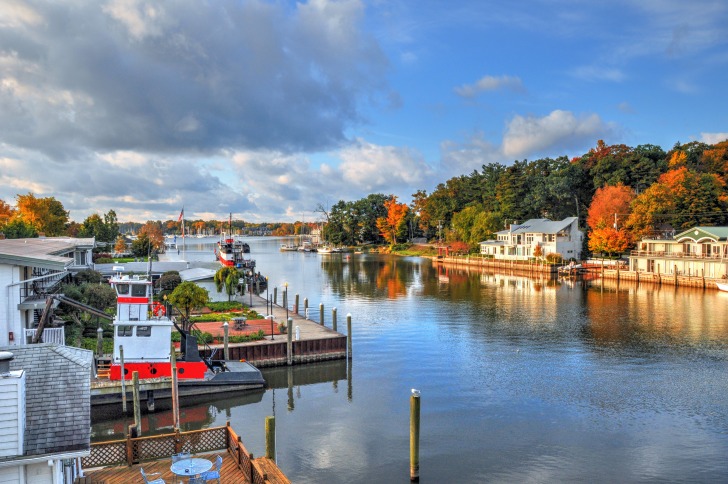Michigan, known for its automotive legacy, the Great Lakes, and picturesque landscapes, offers a diverse array of living experiences. While many charming towns and thriving cities exist, some areas struggle with challenges such as crime, poverty, and economic decline. This article delves into five Michigan cities consistently ranking among the worst places to live, examining the factors contributing to their difficulties.
Methodology
This article considers a combination of factors to determine the worst places to live in Michigan. These include:
- Crime Rates: Data from the FBI’s Uniform Crime Report and local law enforcement agencies are analyzed to assess the prevalence of violent and property crimes.
- Poverty and Unemployment: Census Bureau statistics illuminate poverty rates and unemployment figures within these cities.
- Infrastructure and Housing: The condition of roads, public services, and the housing market is evaluated for signs of decay or neglect.
- Economic Opportunity: Indicators of job availability, business growth, and educational attainment are examined.
- Quality of Life: Resident surveys and reports are considered where available, to gauge how satisfied people feel with their cities.
5. Flint, Michigan
- History and Industrial Decline: Flint, once a symbol of American manufacturing might, experienced a devastating decline following the closure of General Motors factories. This job loss triggered a ripple effect throughout the city.
- Crime and Safety Concerns: Flint consistently grapples with high rates of violent and property crime, creating an unsafe environment for residents.
- Water Crisis: The Flint water crisis, where lead contamination poisoned the city’s water supply, exposed deep-seated infrastructural problems and a lack of adequate governmental response.
- Economic Hardship: The combination of industrial decline, high crime, and the water crisis has severely damaged Flint’s economy. Poverty and unemployment rates remain significantly elevated.
4. Benton Harbor, Michigan
- Extreme Poverty: Benton Harbor holds the grim distinction of having one of the highest poverty rates in the nation, significantly exceeding state and national averages.
- Failing Infrastructure: The city faces crumbling infrastructure, with numerous buildings in disrepair and essential services strained.
- Blight and Urban Decay: Abandoned homes and businesses are a common sight, contributing to a sense of urban blight and neglect.
- Limited Opportunities: The economic outlook remains bleak, with few available jobs and limited prospects for revitalization.
3. Detroit, Michigan
- Urban Challenges and Population Decline: Detroit, a symbol of both industrial power and urban decay, continues its fight for recovery. The city experienced a drastic population decline, leaving vast swaths of neighborhoods with abandoned properties.
- Crime Rates: While crime has decreased over recent years, Detroit’s crime rates still outpace those of many other comparable cities.
- Neighborhood Disparities: Economic and social recovery is uneven across the expansive city. Some areas show promising revitalization, while others remain distressed.
- Signs of Renewal: Despite its challenges, Detroit holds a powerful spirit of resilience. Investment in downtown and certain neighborhoods is sparking signs of revitalization, although progress is slow and uneven.
2. Highland Park, Michigan
- High Poverty and Unemployment: Highland Park is marked by extreme poverty and limited economic activity, leading to high unemployment.
- Troubled Governance: The city has faced years of poor fiscal management and political instability, further hampering progress.
- Limited Amenities: Residents often lack access to essential services and amenities that enhance quality of life.
- Lack of Economic Growth: Attracting new businesses and investment has proven difficult, creating a cycle of stagnation.
1. Muskegon Heights, Michigan
- Violent Crime Rates: Muskegon Heights tragically holds one of the highest violent crime rates in the state and the nation.
- Economic Stagnation: The loss of manufacturing jobs has led to economic hardship. High unemployment and poverty levels continue to grip the city.
- Social Issues: Social problems arising from poverty, such as drug abuse and gang activity, have a significant impact on Muskegon Heights.
- Efforts Towards Improvement: Despite the challenges, community organizations and dedicated individuals are working towards positive change, but the path is difficult.
Important Considerations
It’s crucial to remember that these rankings represent aggregated data and shouldn’t over-generalize any city. Even within struggling communities, pockets of improvement and dedicated residents working towards a better future often exist. Additionally, factors contributing to these problems are complex:
- Systemic Issues: The decline of many of these cities is rooted in larger economic shifts, including deindustrialization and the outsourcing of jobs.
- Legacy of Racial Inequality: Decades of discriminatory practices and segregation have had lasting negative impacts in some of these urban areas.
- Governmental Challenges: Financial mismanagement, lack of resources, and political instability can further hinder progress.
Sources
- FBI Uniform Crime Report: https://ucr.fbi.gov/
- U.S. Census Bureau: https://www.census.gov/
- Local and state government websites (for respective cities)
- News outlets and investigative reports: (Be mindful of potential biases and verify information)
Conclusion
While Michigan offers many desirable places to live, the reality is that some of its cities struggle with significant challenges. Understanding the factors that contribute to the difficulties these areas face is essential in crafting effective solutions. Efforts to revitalize struggling communities must include addressing socioeconomic issues, investing in infrastructure, improving public safety, and fostering renewed economic opportunities.
Disclaimer
This article aims to provide factual information and promote awareness. It’s not intended to stigmatize or negatively stereotype any particular area. It’s important to recognize that cities are dynamic, and conditions can change over time.



